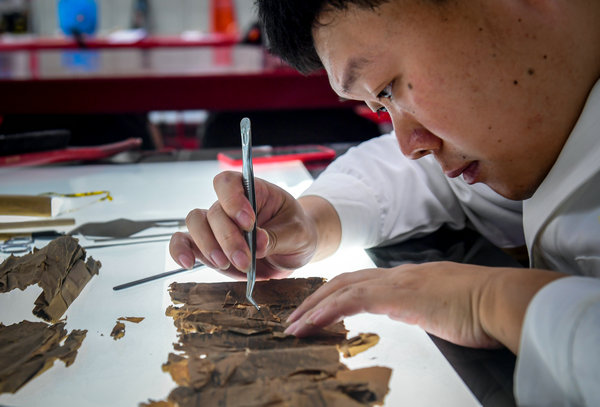

At the Hubei Provincial Museum, there is a notable couple: Zhao Xiaolong, the husband and a specialist in restoring ancient Chinese calligraphy and paintings, and Zhang Xiaolong, the wife and an expert in cultural relic analysis.
Both born in Wuhan, the capital city of Central China's Hubei province, in 1988 — the Year of the Dragon — they share not only similar names but also a passion for preserving China's cultural heritage.
Growing up near the museum, Zhao had a deep love for history and antiques, often crafting small items like tinny tables and bird cages with wood or cardboard. This interest, coupled with his skillful hands, paved the way for his current profession. In 2010, he became a restorer at the museum.
Zhang, on the other hand, had limited knowledge of history since she studied polymer materials at university. Upon graduation, Zhang, like many of her classmates, chose to apply to several chemical companies. However, when she saw the museum's recruiting notice for specialists in relevant subjects, she decided to explore this new opportunity.
"Previously, I knew little about history. It wasn't until I came here that I started to learn and appreciate it more," she said.
Working at the museum, Zhang realized that relic preservation required knowledge and talents from both humanities and sciences as well as other multiple disciplines.
"While humanities specialists uncover relic information from a historical perspective, my role in relic analysis leans more toward scientific and technical proficiency," she said.